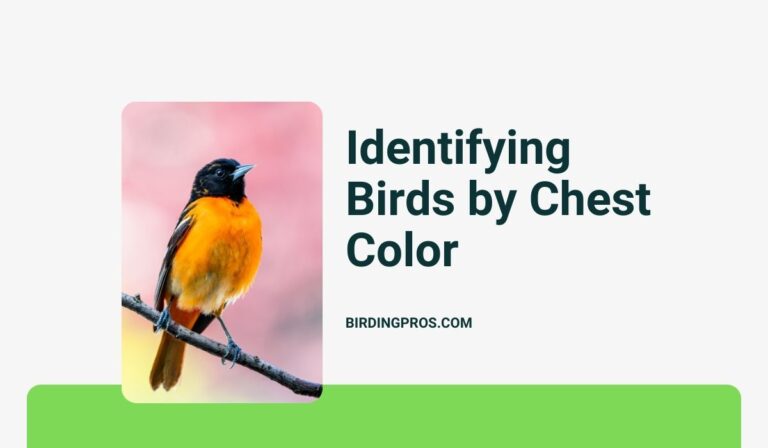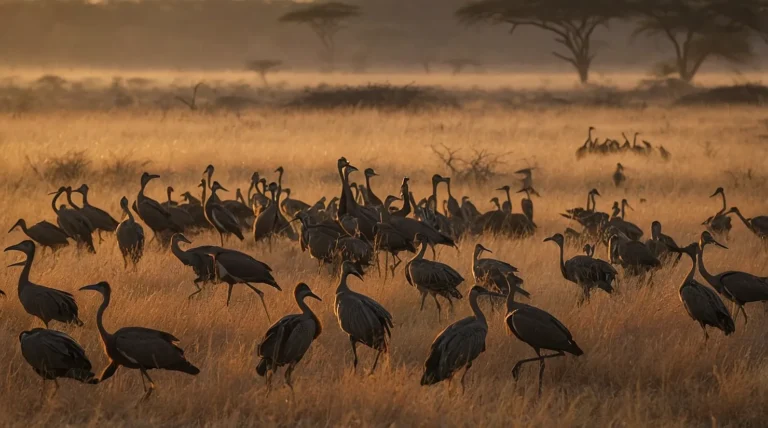Beaverhill Bird Observatory Reviews: An Overview
Near Tofield, Alberta, the Beaverhill Bird Observatory is Canada’s oldest bird observatory, established in 1984. It’s dedicated to the research, conservation, and education of avian species.
Birdwatching at the Beaverhill Bird Observatory (BBO) might be exactly what you need. With its rich biodiversity, scientific significance, and glowing reviews, BBO is more than just a destination—it’s an experience.
Whether you’re an experienced birder or a curious beginner, this guide explores everything you need to know about Beaverhill Bird Observatory reviews and what makes it one of Canada’s hidden gems for birdwatching.
In this post, we’ll dive deep into real visitor experiences, expert insights, and what sets BBO apart from other bird observatories. By the end, you’ll have a clear picture of whether this is the perfect nature retreat for your next adventure.
Contents
The Beaverhill Bird Observatory: An Overview
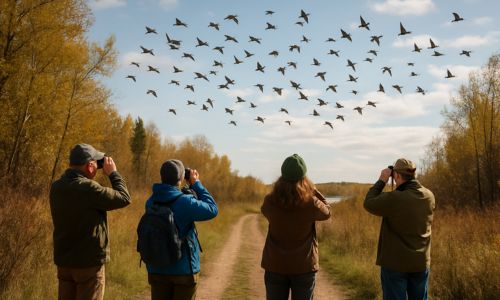
Near Tofield, Alberta, the Beaverhill Bird Observatory is Canada’s oldest bird observatory, established in 1984. It’s dedicated to the research, conservation, and education of avian species. The observatory is part of the Beaverhill Natural Area, a pristine habitat that supports hundreds of bird species throughout the year.
BBO is a seasonal sanctuary where spring and fall migrations transform the sky into a canvas of feathers. It offers both casual observers and academic researchers a unique look into the lives of birds in their natural environment.
Why BBO Attracts Birdwatchers and Nature Lovers
- It’s a designated Important Bird Area (IBA).
- Offers close encounters with birds during banding programs.
- Home to diverse habitats: forests, wetlands, grasslands.
- Frequent sightings of rare and migratory species.
Now, let’s dig into the key reasons BBO receives such strong reviews from birdwatchers across North America.
Key Factors Behind Positive Beaverhill Bird Observatory Reviews
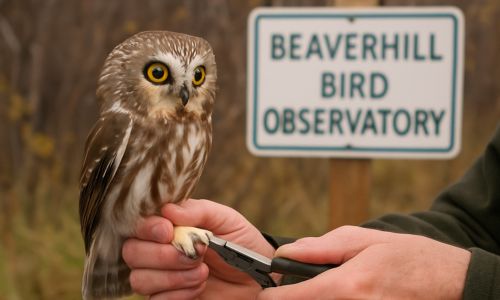
1. A Premier Spot for Migratory Birds
Beaverhill sits directly along major migratory routes. In spring and fall, visitors report spotting dozens of species within hours. From warblers and sparrows to majestic owls and raptors, it’s a birder’s paradise.
Visitor Highlight:
“I saw my first Northern Saw-whet Owl here—so close I could see its chest rise and fall! The banding team explained every step, and I learned so much about bird migration.”
2. Expert-Led Banding and Education Programs
The BBO is not just for sightseeing. Visitors often rave about hands-on educational programs, where trained ornithologists demonstrate bird banding and discuss conservation science.
- Learn about bird anatomy and behavior.
- Participate in data collection (under supervision).
- Great for school groups, families, and citizen scientists.
What Reviewers Say:
“The banding demos are phenomenal! Watching the staff gently handle and release the birds was a deeply moving experience.”
3. Peaceful, Untouched Natural Setting
Unlike more commercialized destinations, BBO offers solitude and serenity. There are no paved walkways or noisy crowds. Instead, you get:
- Rustic trails lined with wildflowers.
- Birdsong echoing through tall grass.
- Early morning fog lifting over the wetlands.
Common Sentiment in Reviews:
“It felt like stepping back in time. No noise, no traffic—just nature.”
4. Volunteer and Citizen Science Opportunities
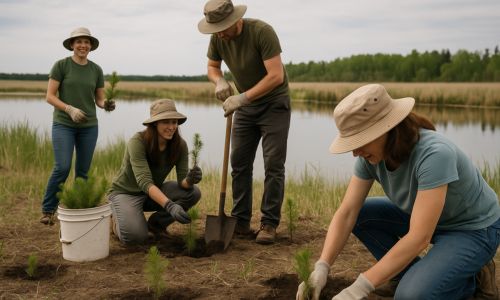
For those looking to dive deeper, BBO offers seasonal volunteer programs. You can assist with research, habitat restoration, and educational outreach.
These opportunities not only deepen your understanding of ornithology but also provide a sense of purpose and community.
Volunteer Review:
“Volunteering at BBO was life-changing. I helped with banding, cleaned bird boxes, and even taught a visiting class about local species.”
Practical Tips and Real-Life Experiences from Visitors
Pack for the Environment
Visitors frequently mention the need for proper gear:
- Waterproof boots (trails can be muddy)
- Binoculars and field guides
- Insect repellent in summer
- Layers (mornings can be chilly)
Best Times to Visit
According to the reviews, the top seasons are:
- Spring (April to June): Prime migration and breeding season.
- Fall (August to October): Best chance to see large flocks of songbirds and raptors.
How to Get There
Most visitors drive in from Edmonton (just over an hour east). Parking is limited, so early arrival is recommended. There are no major amenities nearby, so plan your food and water ahead of time.
Read More from BirdingPros
Common Mistakes to Avoid When Visiting Beaverhill Bird Observatory
1. Assuming It’s a Zoo or Tourist Attraction
BBO is a working research site. It doesn’t have souvenir shops, guided tours every hour, or a gift shop. Some reviewers were surprised by the minimal infrastructure.
“I expected more buildings and facilities, but it’s more of a wilderness station.”
2. Coming Midday
Birds are most active in the early morning and late afternoon. Many negative reviews came from those who visited in the heat of midday and saw fewer birds.
“We only saw a few gulls and crows around noon—should have come earlier!”
3. Not Checking Seasonal Activity
Not all birding programs run year-round. Banding and volunteer opportunities are seasonal. Always check their website or social media before planning your visit.
“I drove out in January and it was completely closed. Totally my fault, but disappointing.”
Summary: Why BBO Reviews Are Overwhelmingly Positive
Let’s break down the top reasons BBO stands out:
- Unparalleled access to migratory species.
- Educational, hands-on experiences with trained staff.
- A peaceful, off-the-grid atmosphere.
- Strong conservation mission and volunteerism.
Whether you’re looking for a moment of peace or the thrill of spotting a rare bird, BBO offers something for every nature enthusiast.
Conclusion: Should You Visit Beaverhill Bird Observatory?
If you’re searching for a destination that combines education, adventure, and tranquility, the Beaverhill Bird Observatory is hard to beat.
Its glowing reviews aren’t just hype. They’re the result of years of dedication to bird research, community outreach, and preserving Alberta’s natural heritage.
So, pack your field notebook, grab your binoculars, and plan a visit to BBO. Whether you’re chasing lifers or seeking solitude, this special place will welcome you with open skies and birdsong.
What about you? Have you ever witnessed a banding in action or heard the haunting cry of a Sandhill Crane at dawn?
Leave a comment and share your experience—or better yet, plan your own visit and write your own review.
FAQs: Beaverhill Bird Observatory Reviews
1. What types of birds can I expect to see at Beaverhill Bird Observatory?
You might see over 200 species throughout the year, including warblers, thrushes, owls, woodpeckers, and hawks. Migration seasons offer the best variety.
2. Is Beaverhill Bird Observatory open year-round?
No, it operates mainly from spring to fall. Some research continues year-round, but public programs are seasonal. Check their website for current schedules.
3. Do I need to book in advance to visit?
Casual visits don’t usually require booking. However, banding tours, volunteer opportunities, and group visits should be arranged in advance.
4. Is it family-friendly?
Yes, but facilities are minimal. Bring your own food, water, and supplies. Children interested in nature will find it a great learning experience.
5. Can I volunteer at Beaverhill Bird Observatory?
Yes, they welcome volunteers during active seasons. Roles include assisting with banding, habitat maintenance, and public education.
6. Are there guided tours?
Not in the traditional sense. You can request educational visits, and staff are usually happy to answer questions during banding operations.
7. How do I leave a review for Beaverhill Bird Observatory?
You can leave reviews on platforms like Google Maps, Facebook, and TripAdvisor. Sharing your experience helps future visitors know what to expect.



